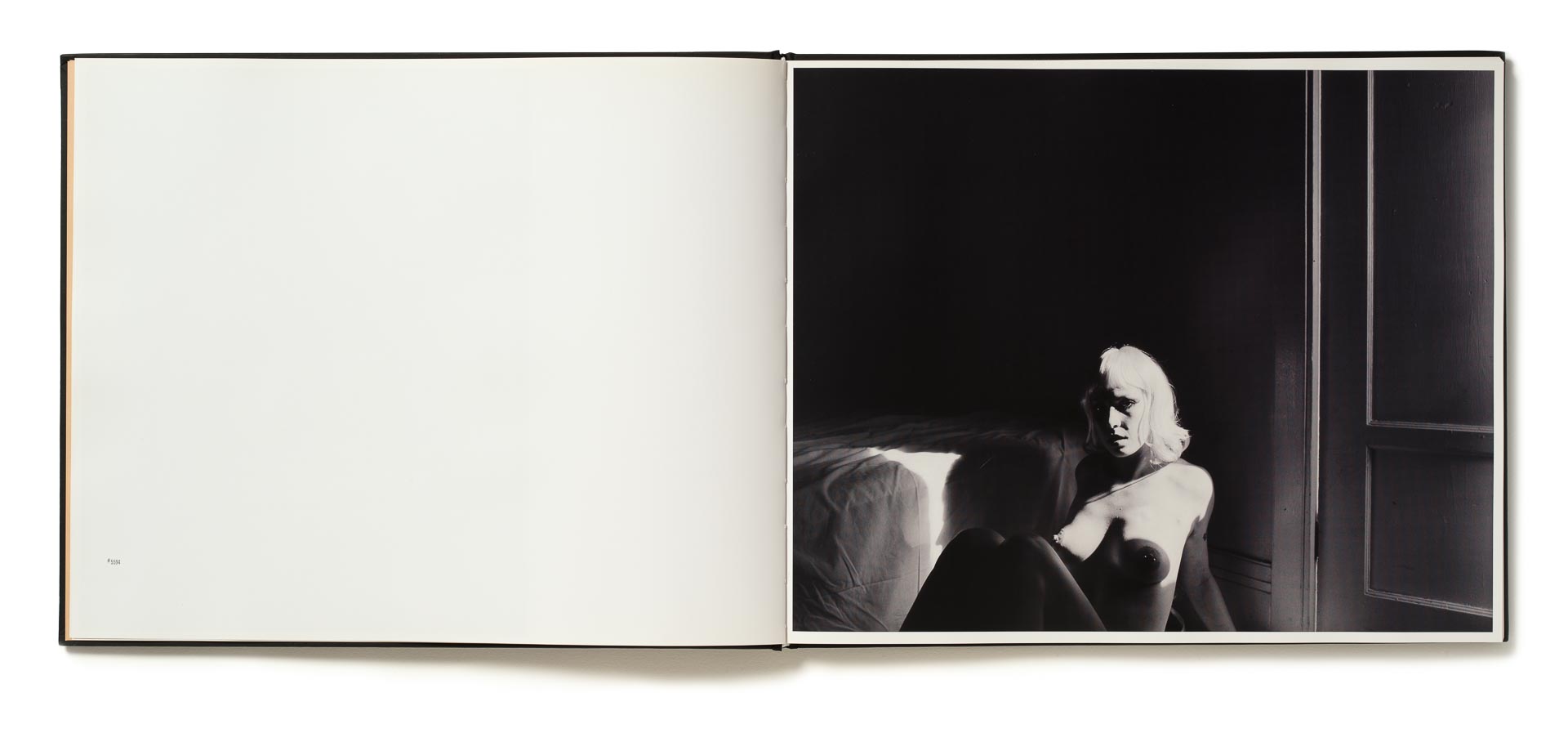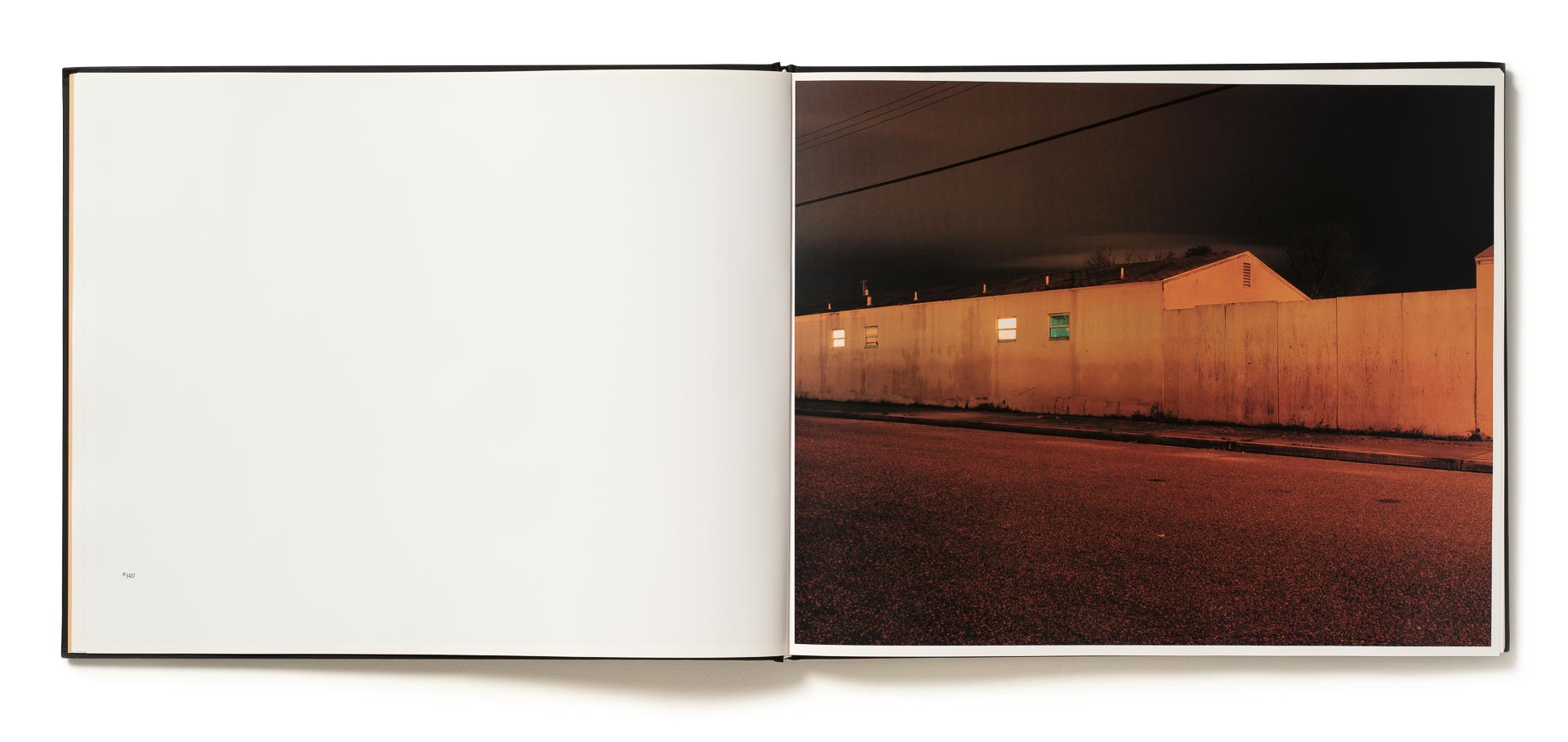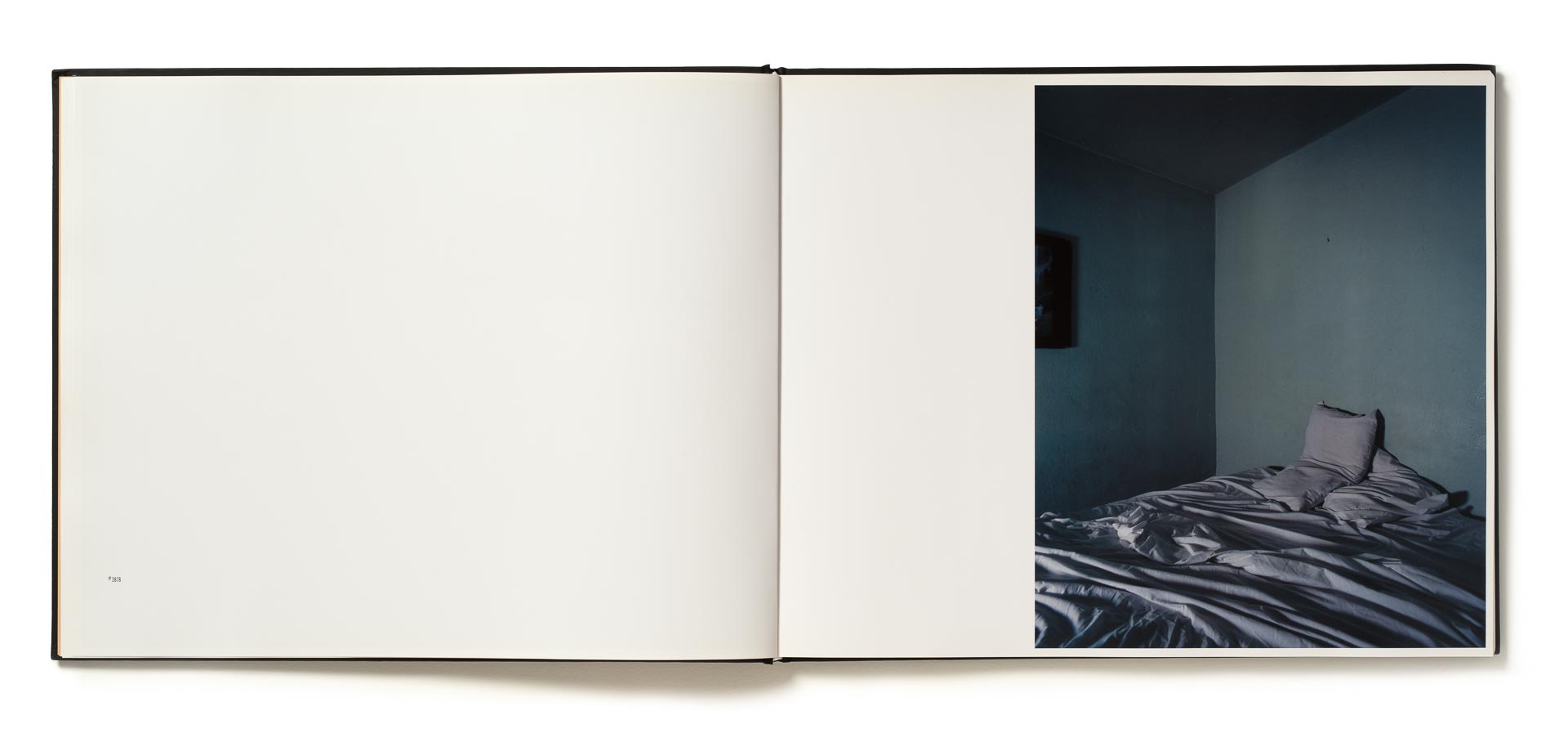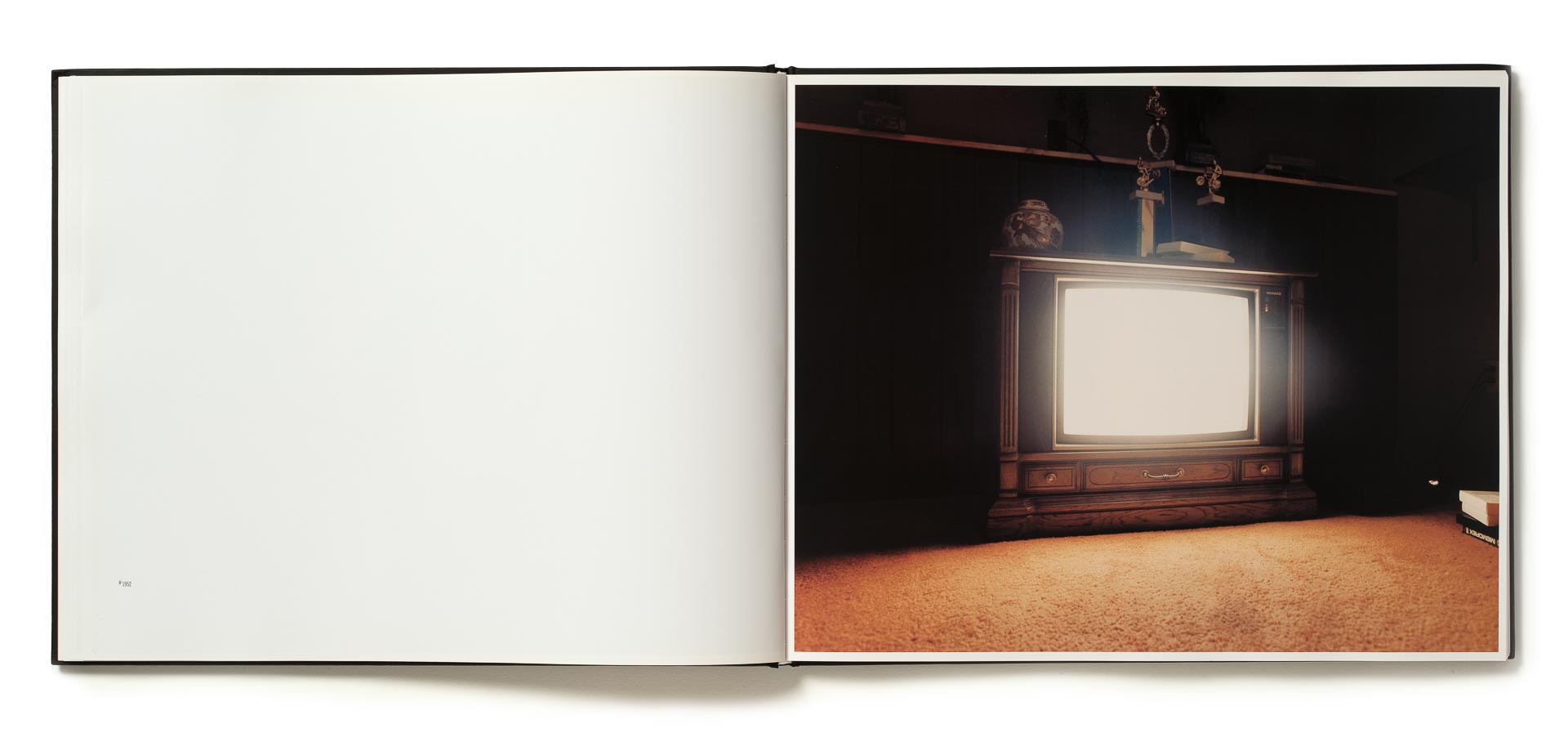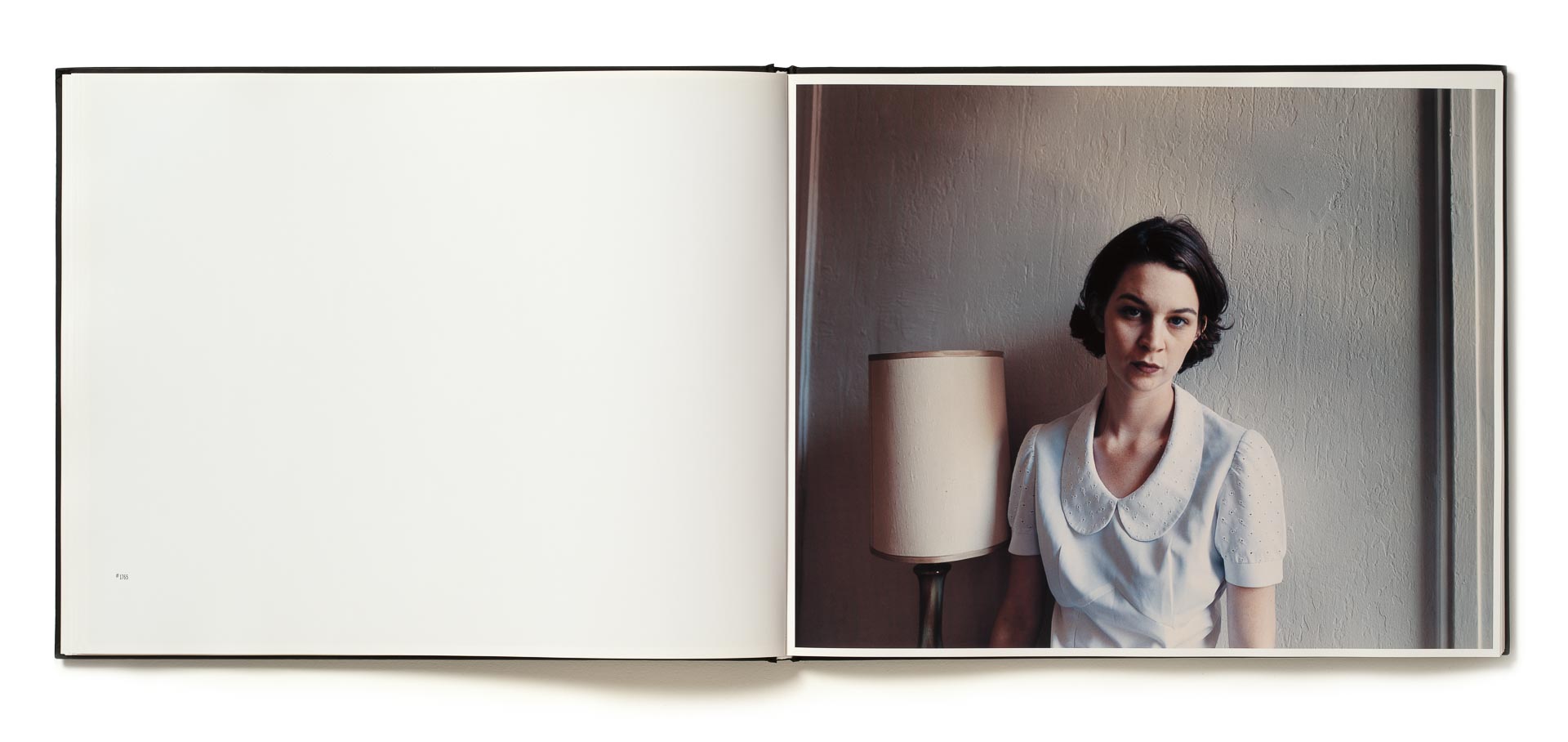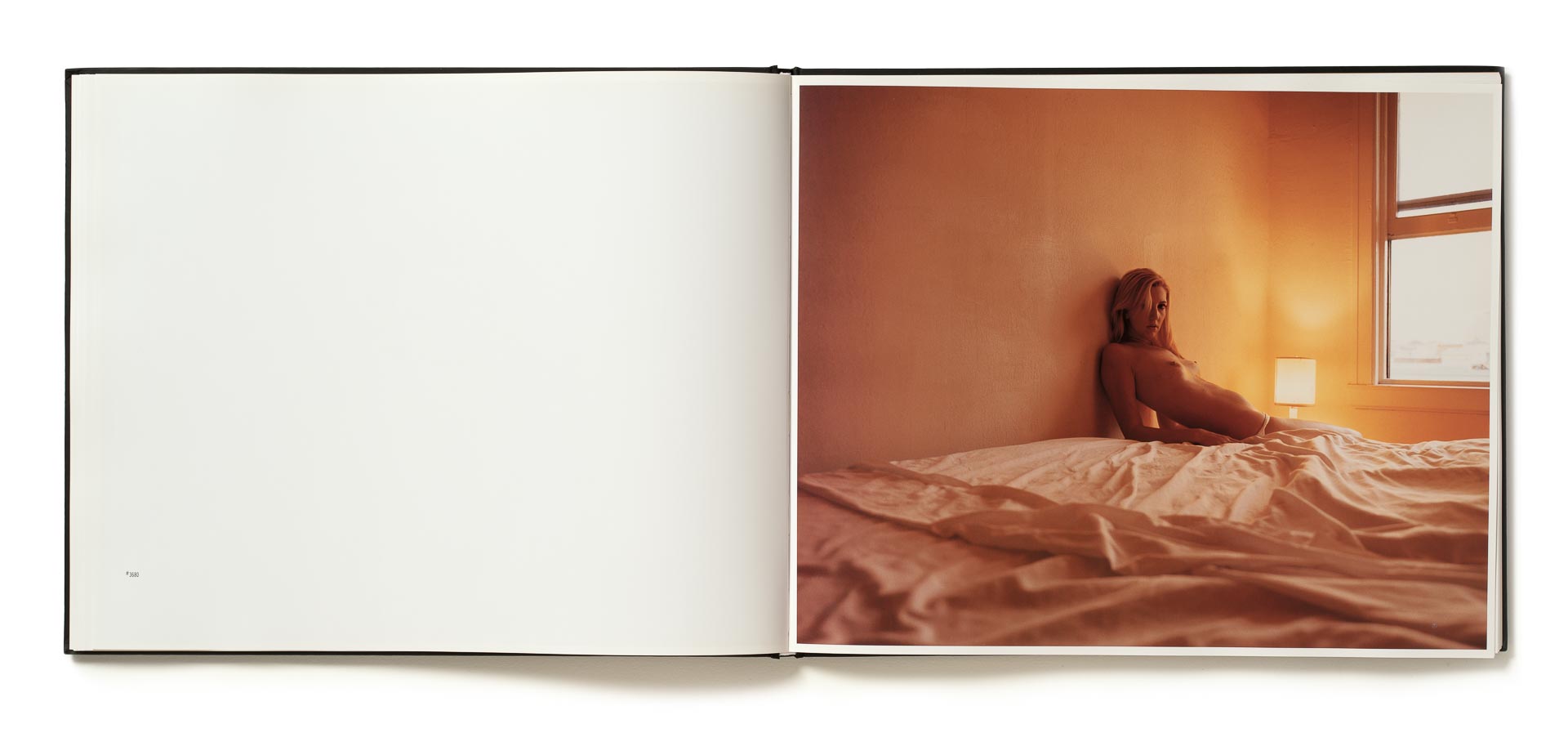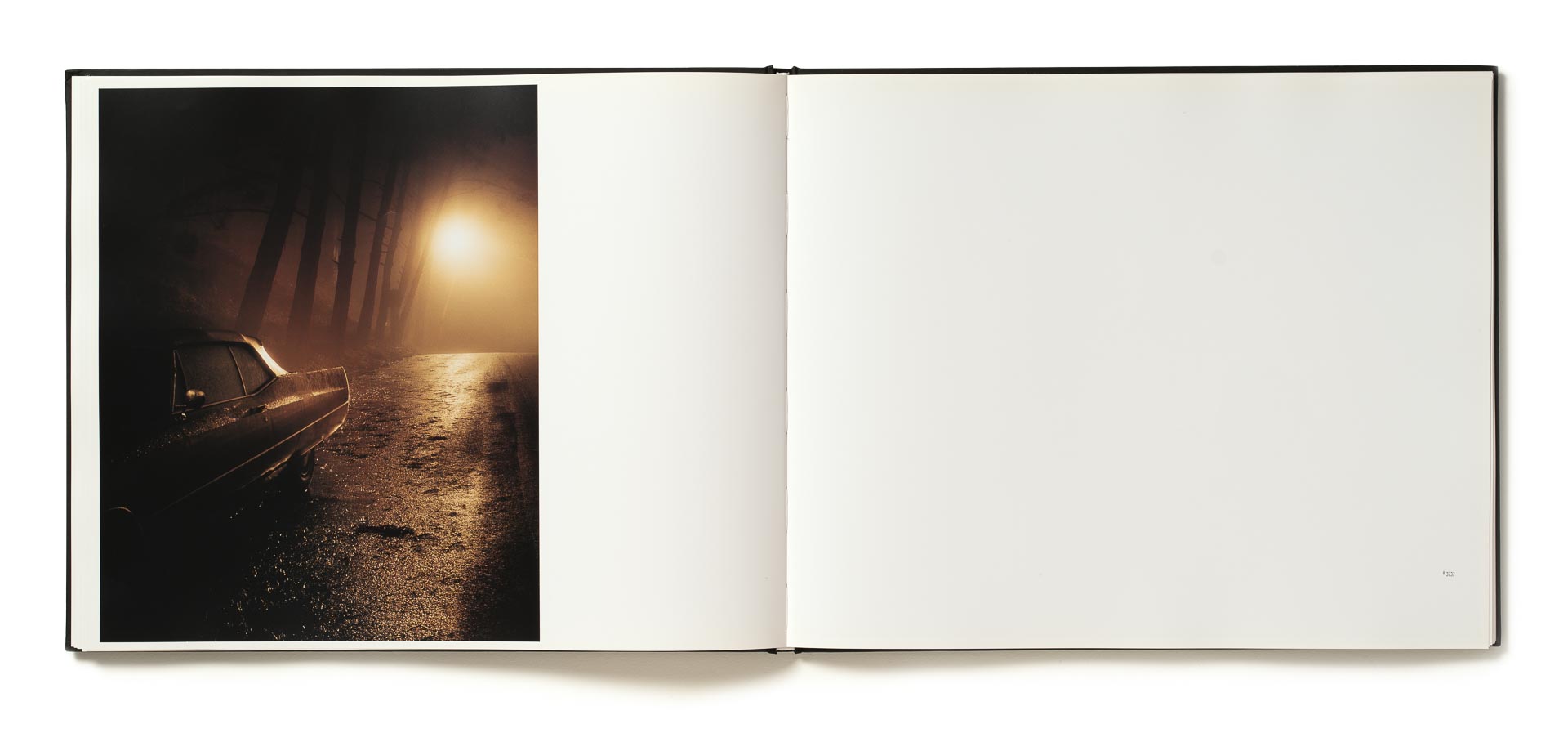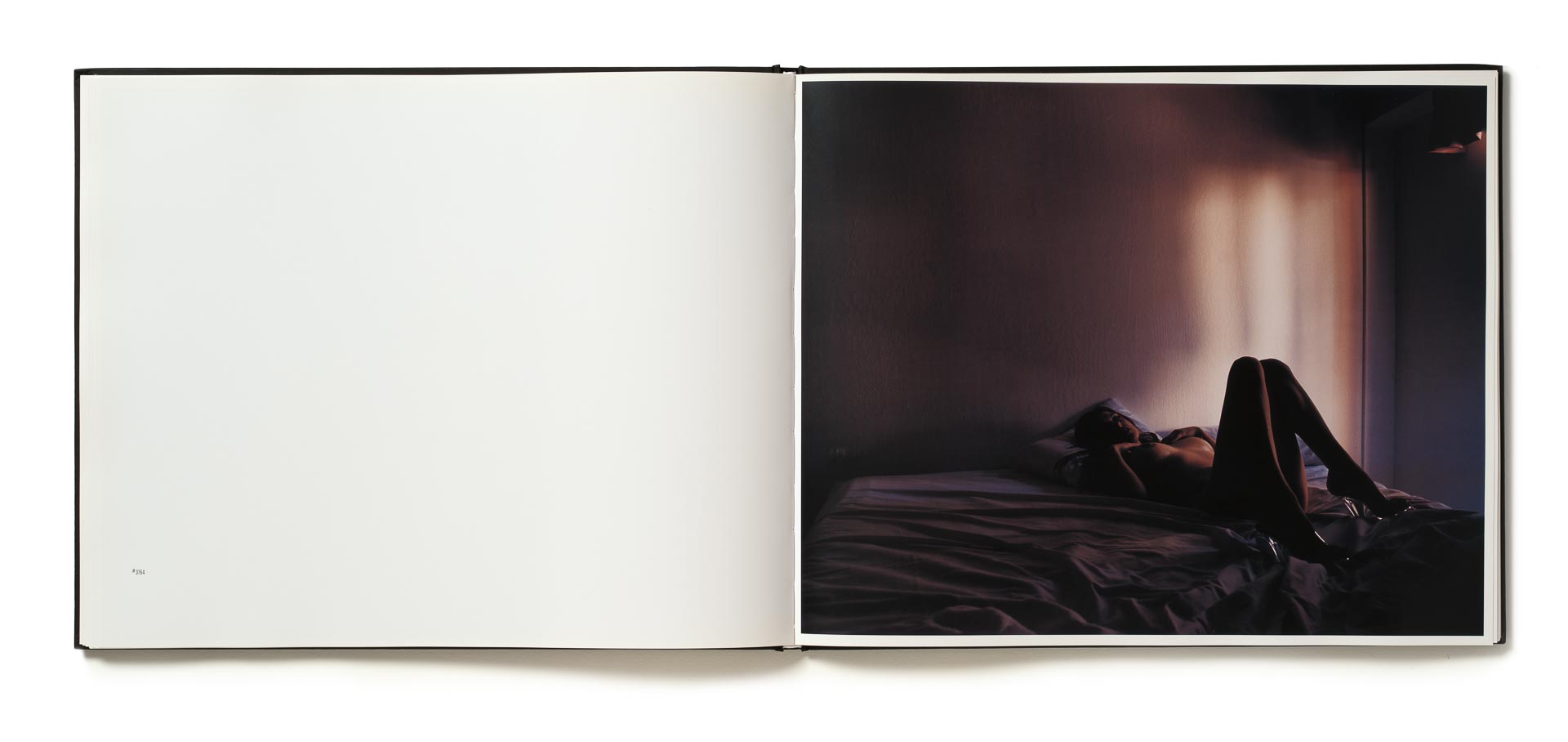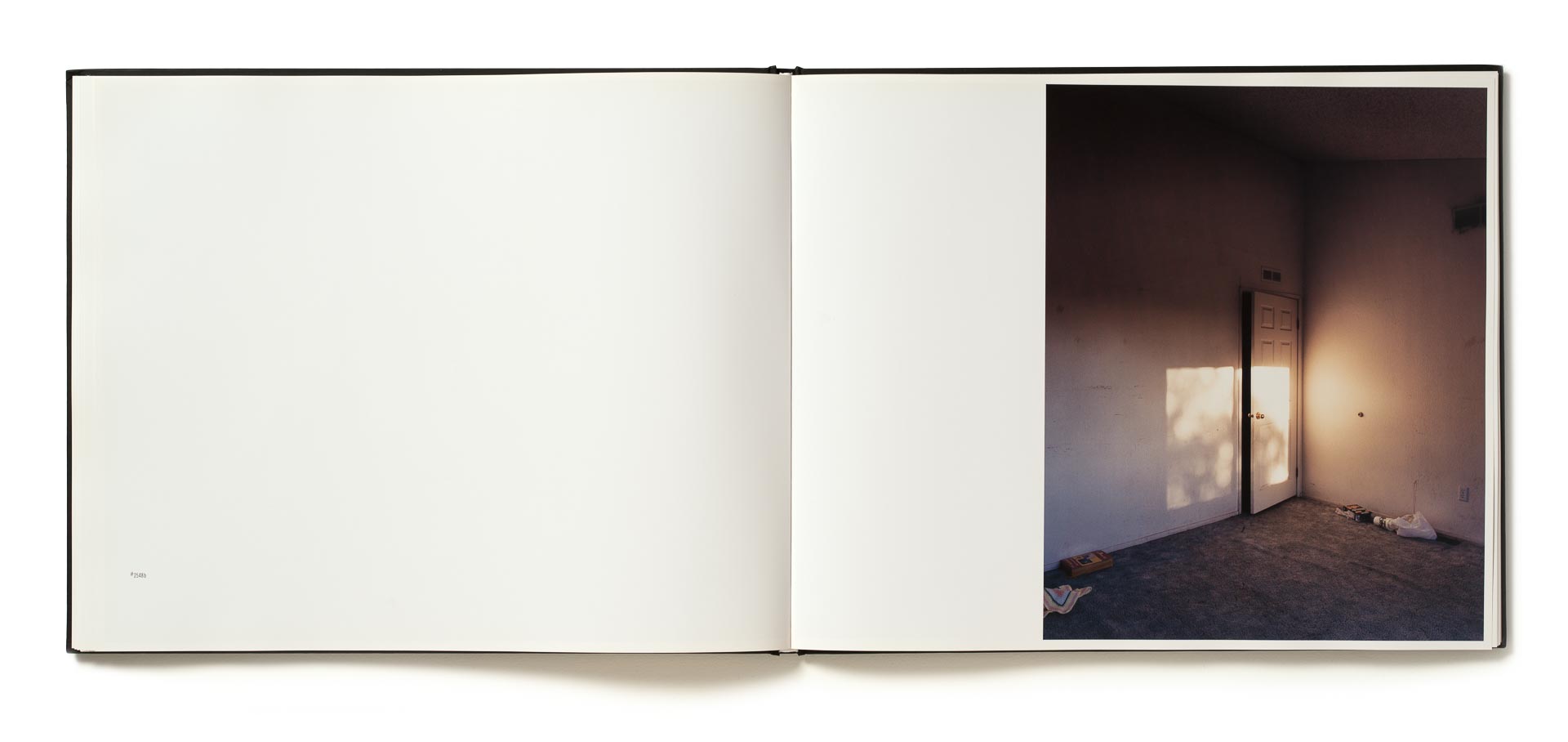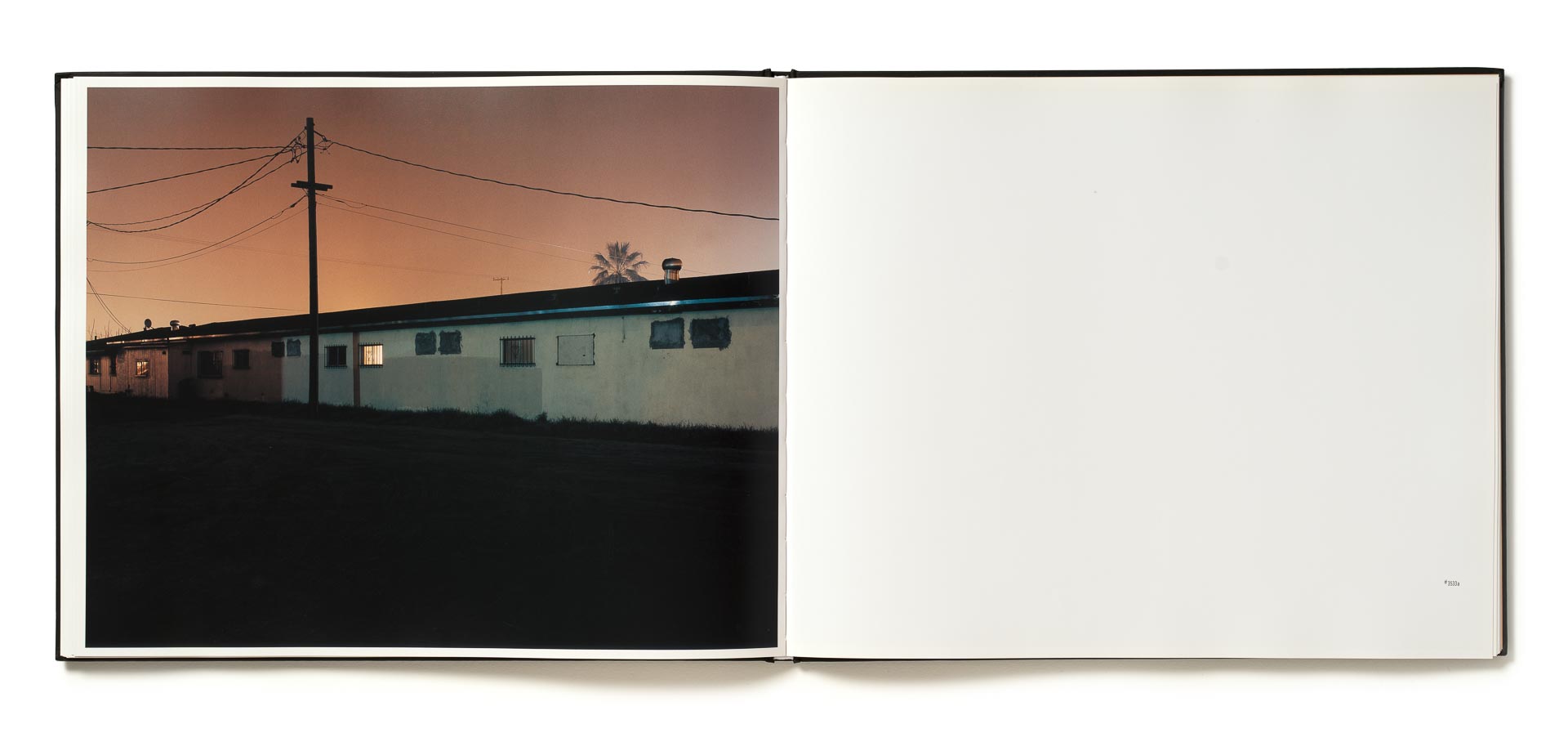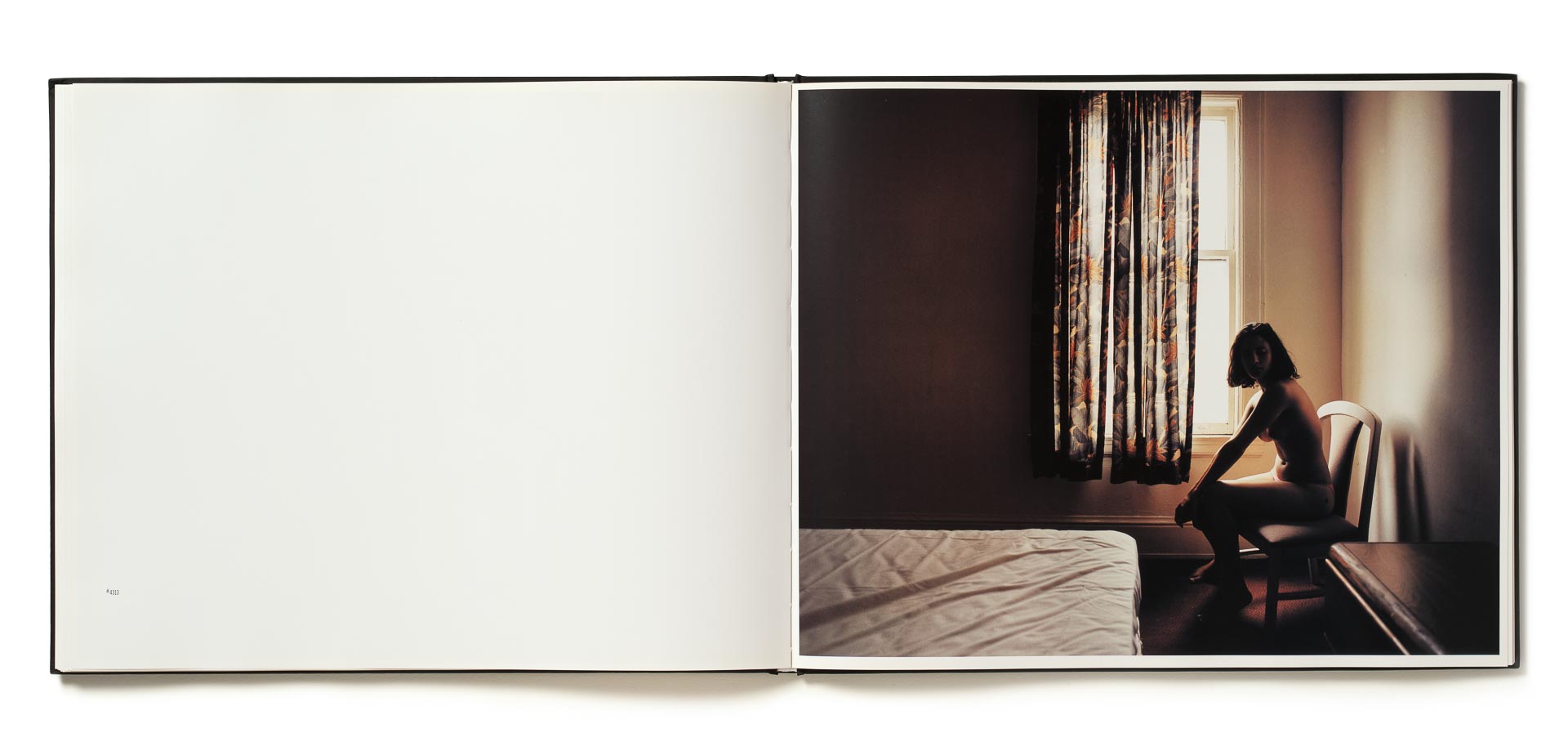Between the Two
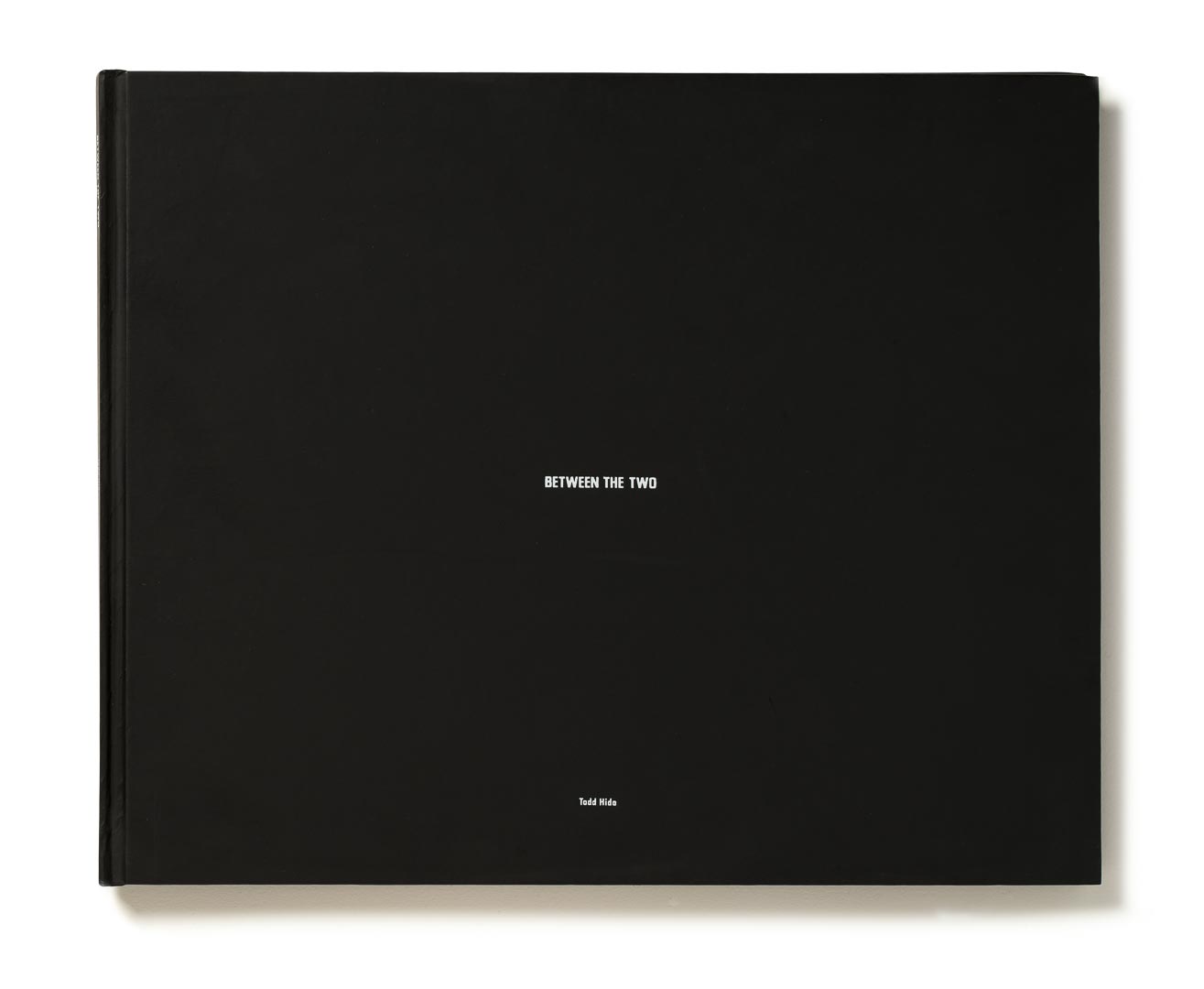
Until the publication of Between the Two, in 2007, Todd Hido had not published or exhibited his portrait work, though he worked on it consistently. Portraits are the primary drive of this book, which maintains its introversion, even when allowing for direct encounters and eye-contact with people, whose existence is only implied in previous books.
Primarily, the camera finds women in anonymous but ostensibly American settings — the bare motel room, the suburban basement bedroom. The expressions captured on film range from defiance to resignation, but primarily they demonstrate an inscrutability.
The photographs are intimate and direct. Though there is a strong connection between photographer and model, the connection between photograph and viewer is stronger still — even if undefined. The title of the book points to those spaces between photographer and subject, photograph and viewer, and between one photograph and the next, in which a narrative (or tension) inevitably forms. ‘It is an unmistakable nod to the book being about relationships,’ Hido acknowledges.
Hido savors a quote by late photographer Lewis Baltz that defines photography as ‘a profound corner that sits in between literature and film.’ Hido likes to loiter on this corner. Without script, plot, before or after, Hido shows characters, situations, and spaces that are at once malleable to personal interpretation, and exhibit an extremely precise point of view. This can only be a Todd Hido photograph, but it lends itself to as many interpretations as there are humans.
‘I think the people who really connect with my work see something of themselves in it; they don’t necessarily see me,’ says Hido. ‘The thing I hear most often is, “that reminds me of…”’ That reminds me of the town I grew up in. That reminds me of this house or that girlfriend. That weather brings me back to this point in my life. ‘Take an image of a suburban street,’ the artist continues. ‘Some people see the most fucked up place they’ve ever been, while others go back to their wonderful childhoods. I learned early on that ambiguity was one of art’s best tools.’
Text by Katya Tylevich
